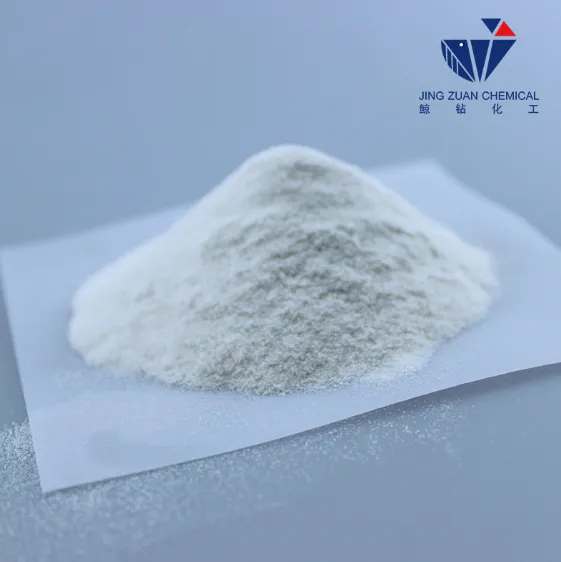
Mai . 16, 2025 17:44 Yn ôl i'r rhestr
The Widespread Application of Hpmc in the Detergent Industry
HPMC, as a non-ionic cellulose ether derivative, has been widely used in the detergent industry due to its excellent thickening, water retention, emulsifying stability, dispersibility, and film-forming properties. This article will explore the specific applications and importance of HPMC in the detergent industry.

One of the most significant applications of HPMC is as a thickener and stabilizer
In liquid detergents, instant dissolving HPMC can significantly increase the viscosity of the product, giving it a better tactile and user experience. Meanwhile, HPMC, through its unique molecular structure, can effectively prevent various components in detergents from precipitating, layering, and flocculation, maintain product uniformity and stability, and extend shelf life. For some detergents containing particles or suspended particles (such as cleaning microbeads), HPMC can play a more stable role in suspension, ensuring that the particles are evenly dispersed and exerting their expected cleaning effect.
HPMC also plays an important role in powder detergents
High purity HPMC can enhance the formability and flowability of powders, preventing agglomeration during use. At the same time, the water retention of HPMC can increase the dissolution rate of the powder, allowing the detergent to release cleaning ingredients faster and improve washing efficiency. In addition, HPMC can reduce the generation of dust and improve the usage environment of powder detergents.
The film-forming property of HPMC allows it to be applied in detergents with special functions
For example, in some detergents with color protection functions, pure HPMC can form a protective film on the surface of clothing, reducing dye loss and thus protecting the color of clothing. At the same time, this protective film can also reduce the direct erosion of dirt on clothing, making it easier to remove stains.
In addition, fast dissolving HPMC has good biocompatibility and safety, is environmentally friendly, and meets the requirements of modern detergent industry for environmental protection. With the continuous improvement of consumers' awareness of detergent quality and environmental protection, HPMC, as an excellent and environmentally friendly additive, will have a broader application prospect in the detergent industry.
In summary, HPMC plays an indispensable role in the detergent industry due to its unique performance advantages. From liquid detergents to powder detergents, from ordinary cleaning products to detergents with special functions, the application of HPMC is ubiquitous. With the continuous advancement of technology and the changing demands of consumers, the application of HPMC in the detergent industry will become more in-depth and extensive in the future, providing people with more efficient, environmentally friendly, and safer washing products.
HPMC FAQs
1: What is the main role of HPMC in detergents?
HPMC is mainly used as a thickener, stabilizer, and anti redeposition agent in detergents:
Thickening: enhance the viscosity of liquid detergent/laundry gel and improve the feel of use.
Stable system: prevents solid particle settling and extends shelf life.
Anti redeposition: Helps stains suspend in water, avoiding reattachment to clothing (especially suitable for laundry detergent).
2: Why choose HPMC instead of other thickeners?
The advantages of HPMC include:
Salt resistance: Can maintain stability in detergents with high electrolyte content (such as salt containing laundry detergent).
PH adaptability: It can function in both alkaline (pH 912) and neutral systems.
Environmental friendliness: Biodegradable, in line with the trend of green detergents.
Low foaming properties: suitable for low foaming formulas, reducing the number of rinses.
3: How can HPMC improve the cleaning effect of detergents?
Film forming property: forms a protective film on the surface of clothing, reducing secondary adsorption of stains (especially on cotton fibers).
Dispersing effect: Assist in the uniform dispersion of surfactants and improve cleaning efficiency.
Low temperature stability: can still maintain performance in cold water washing (compared to some temperature sensitive thickeners).
4: What is the typical dosage of HPMC added to detergent?
Liquid detergent: 0.1%~1.0% (adjusted according to viscosity requirements).
Laundry bead/gel: 0.5%~2.0% (need to cooperate with other colloids such as carrageenan).
Powder detergent: usually less than 0.5% (mainly used as an anti redeposition agent).
Note: Experimental optimization is required, as excessive amounts may affect fluidity or solubility.
5: What issues should be noted when using HPMC in detergent applications?
Solubility: It is recommended to disperse in cold or warm water (below 80 ℃) in advance to avoid clumping.
Compatibility testing: It has good compatibility with anionic/nonionic surfactants (such as LS, ES), but the specific formula needs to be verified.
Storage conditions: Avoid high temperature and humidity, and prevent moisture absorption and clumping (especially for powdered detergents).
Alternative solution: Products with high transparency requirements can choose low viscosity models (such as E5).
-
Unlocking the Benefits of HPMC Products: A Gateway to Versatile Applications
NewyddionAug.07,2025
-
Unleashing the Potential of HPMC Ashland: A Comprehensive Look
NewyddionAug.07,2025
-
Tile Bonding Cellulose: The Key to Superior Adhesion and Durability
NewyddionAug.07,2025
-
Hydroxypropyl Methylcellulose Powder: The Versatile Component in Modern Pharmaceuticals
NewyddionAug.07,2025
-
Hydroxyethyl Cellulose: The Versatile Solution for Various Industries
NewyddionAug.07,2025
-
Hydroxyethyl Cellulose (HEC): The Versatile Polymer for Various Applications
NewyddionAug.07,2025







